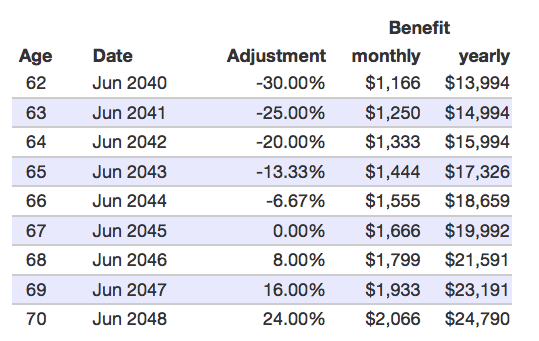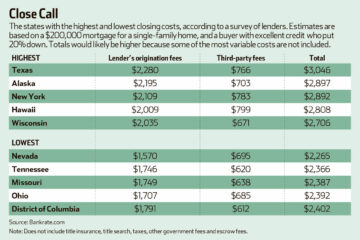
Social Security is an important component of the retirement plan for many Americans. It provides a basic income for retirees and disabled persons, and is funded through payroll taxes.
Understanding how Social Security benefits are calculated, and how much you can expect to receive each month, is critical for planning your retirement. In this blog post, we’ll explain how Social Security benefits are calculated and the factors that determine the amount of your benefit.
Explanation of Social Security Benefits
The Social Security Administration calculates your primary insurance amount (PIA) based on your average indexed monthly earnings (AIME). The AIME is the average of your highest 35 years of earnings, adjusted for inflation. The PIA is then calculated using a formula that takes into account three different “bend points”. The highest 35 years of earnings is the period when you received the highest income in your lifetime. The formula for PIA is as follows:
– 90% of the first $1,174 in AIME
– 32% of AIME over $1,174 and up to $7,078
– 15% of AIME above $7,078
The dollar amounts for the bend points change every year and are indexed for inflation. The result of this formula is your monthly Social Security benefit.
Factors that determine social security benefits
The amount you receive in Social Security benefits depends on several factors:
– Age: The age at which you begin taking benefits can affect the amount you receive. You can start taking benefits as early as age 62 or as late as age 70. If you start taking benefits early, your monthly benefit will be reduced. Conversely, if you delay taking benefits, you can receive an increased monthly benefit.
– Earnings history: Your monthly benefit is based on your earnings history. The higher your earnings, the higher your monthly benefit will be. The Social Security Administration calculates your benefits based on your highest 35 years of earnings.
– Disability: Social Security benefits are also available to those who are disabled. If you are unable to work due to a disability, you may be eligible for Social Security disability benefits. These benefits are based on your earnings history and are intended to provide a basic income to those who are unable to work.
– Family history: If you are married, you may be eligible for spousal benefits. Spousal benefits are based on a percentage of your spouse’s benefit amount. If you are divorced, you may also be eligible for benefits based on your ex-spouse’s earnings history.
In conclusion, Social Security benefits are an important component of retirement planning. Understanding how your benefits are calculated and the factors that determine the amount of your benefit can help you plan for a financially secure retirement. So, it is recommended to check your earnings history on your social security statement to ensure it is accurate and to estimate your Social Security benefits to plan your retirement.[1][2]
Quick Calculator
Using the Quick Calculator can give an idea of what to expect from Social Security benefits. However, it is essential to remember that the estimates provided by the Quick Calculator are merely an approximation and not the exact benefit amount. Read on to learn more about how to use the Quick Calculator, the information that it requires, and how reliable it is.
How to use the Social Security Quick Calculator
Accessing the Quick Calculator is easy. All you need to do is go to the Social Security website and enter the required information. The Quick Calculator does not access your earnings record to maintain the confidentiality of your data, nor does it require a Social Security number to use it.
Once on the Quick Calculator page, select the year you were born and your estimated retirement age. Enter your current yearly salary to get a rough estimate of your benefits. Calculating future benefits can be tricky because they depend on multiple factors like inflation, changes to tax rates, and others. But the Quick Calculator will still give you a rough idea of your estimated retirement benefits.
Information required for the calculator
The Quick Calculator requires only two pieces of information: the current yearly salary and your birth year. It can calculate the estimate of your monthly retirement benefits based on this information. Keep in mind that your actual benefit amount may differ from the Quick Calculator’s estimate because the program does not have access to your detailed earnings record.
How reliable is the Quick Calculator
As previously stated, the estimates provided by the Quick Calculator are not the exact amount you will receive as Social Security benefits. The estimates might be higher or lower than your actual benefit amount. This tool should be considered as a useful resource and not as a definitive source, especially if you are planning for retirement.
It is worth mentioning that the Quick Calculator does not consider your work credits, contributions to other retirement accounts, spousal benefits, and other factors that can affect your Social Security Payments. These factors may require advanced calculation and professional advice from a financial expert to help you plan for your retirement efficiently.[1][2][3]
Your Earnings History
What is earnings history?
Your earnings history is a record of your income over your working years. It includes the taxes paid on those earnings that fund your Social Security benefits. Social Security uses these records to calculate your benefits when you claim them. It is essential to keep track of your earnings history as it directly affects the amount of Social Security benefits you are eligible to receive.
How it affects your Social Security benefits
Your earnings history plays a crucial role in determining your Social Security benefits. The Social Security Administration (SSA) uses a complex formula to calculate your benefits that takes into account your highest 35 years of earnings. The more you earn, the higher your eventual benefit amount will be. If you have gaps or errors in your earnings history, it may result in a lower benefit amount.
How to check your earnings history
It is vital to review your earnings history regularly to ensure its accuracy. Mistakes in your earnings history could lead to you receiving less than what you are entitled to in benefits. You can access your earnings history by creating an account on the Social Security Administration’s website. Once logged in, you can view and verify your earnings history to ensure its accuracy.
It is recommended that you review your earnings history at least once per year and compare it to your own records, including W-2 forms and tax returns. If you notice any discrepancies, you can contact Social Security to correct them. It is essential to catch and correct any errors as early as possible to avoid any issues when you claim your benefits.
In conclusion, your earnings history is an essential piece of information that affects your Social Security benefits. You can use the Quick Calculator to estimate your benefits, but it is crucial to regularly review and verify your earnings history for accuracy. By reviewing your record annually and making any necessary corrections, you can ensure that you receive the full benefits you are entitled to.[4][5][6]
Social Security Benefit Formula
How social security benefits are calculated
Social Security benefits are calculated based on the average indexed monthly earnings (AIME), which is determined by selecting the years with the highest indexed earnings and dividing the total by the number of months in those years. The resulting average amount is then rounded down to the next lower dollar amount.
Primary Insurance Amount (PIA) explained
The primary insurance amount (PIA) is the monthly benefit amount a person is entitled to receive based on their earnings record. The PIA formula is used to calculate the monthly benefit amount for an individual who becomes eligible for old-age or disability insurance benefits in 2024 or dies before becoming eligible for benefits.
Formula for calculating PIA
The PIA formula is based on three tiers of earnings brackets. For the first tier of earnings up to $1,174 per month, 90% is multiplied by the indexed earnings. For the second tier, earnings between $1,174 and $7,078 per month, 32% of the indexed earnings are added to the first tier amount. For the third tier, earnings above $7,078 per month, 15% of the indexed earnings are added to the first two tier amounts.
It is worth noting that the credit for delayed retirement gradually increases by 8% per year for individuals born after 1942, up to age 69. After age 69, no delayed retirement credits are given. Social Security also pays benefits to disabled workers who meet medical and insured requirements.
Quick Calculator
The Social Security Quick Calculator is a tool that provides an estimated monthly retirement benefit based on an individual’s current yearly salary and birth year. However, keep in mind that the estimates provided by the Quick Calculator are just an approximation and not the exact benefit amount.
How to use the Social Security Quick Calculator
To use the Quick Calculator, go to the Social Security website and enter the required information. The Quick Calculator does not access an individual’s earnings record or require a Social Security number to use it. Select the year of birth and estimated retirement age, and enter the current yearly salary to get an approximate estimate of the monthly retirement benefits.
Information required for the calculator
The Quick Calculator requires only the current yearly salary and birth year to calculate the estimated monthly retirement benefits. However, keep in mind that actual benefit amounts may differ from the Quick Calculator’s estimate because it does not consider work credits, contributions to other retirement accounts, spousal benefits, and other factors that can affect Social Security payments.
How reliable is the Quick Calculator
The Quick Calculator should be considered a useful resource rather than a definitive source for planning retirement because it provides only an estimated benefit amount. Other factors, such as inflation, tax rate changes, and possible changes to the Social Security program, can also affect the actual benefit amount a person may receive. For a more accurate estimation, professional advice from a financial expert may be required.[4][5][6]
Retirement Benefits
Qualifying for retirement benefits
To qualify for Social Security retirement benefits, you need to have worked for at least 10 years and accumulated a minimum amount of Social Security credits. You earn credits by paying Social Security taxes on your earnings. The amount of credits you need to qualify for retirement benefits depends on your birth year, but generally, you need to have earned at least 40 credits to qualify.
Full Retirement Age (FRA) and how it affects benefits
Your full retirement age (FRA) is the age at which you are eligible to receive your full Social Security benefits. Your FRA depends on your birth year and ranges from 66 to 67. You can start receiving benefits as early as age 62, but if you choose to begin early, your benefits will be reduced. On the other hand, if you defer receiving benefits past your FRA, you can receive delayed retirement credits that will increase your benefit amount.
Retirement benefit estimates
The Social Security Quick Calculator is a tool that can give you an estimated monthly benefit amount based on your current salary, birth year, and estimated retirement age. However, keep in mind that the estimate is just an approximation and not the exact benefit amount. To get a more accurate estimate, you can use the Retirement Estimator tool on the Social Security website, which accesses your earnings record and provides a more precise estimate.
The amount of retirement benefits you receive is based on your earnings history and the number of credits you have earned. The maximum benefit amount for a person retiring at their FRA in 2021 is $3,148 per month. However, most retirees receive less than the maximum, with the average monthly benefit in 2021 being around $1,543.
In conclusion, Social Security retirement benefits are an important part of retirement planning. Knowing your FRA and estimated benefits can help you make informed decisions about when to retire and how much income you can expect to receive. The Quick Calculator is a useful tool for estimating your benefits, but for a more accurate and personalized estimate, use the Retirement Estimator tool on the Social Security website or consult a financial expert.[7][8][9]
Disability Benefits
Qualifying for disability benefits
To qualify for Social Security Disability Insurance (SSDI) benefits, you must have worked long enough and recently enough in jobs covered by Social Security. Besides, you must have a medical condition that meets Social Security’s strict definition of disability. Social Security defines disability as the inability to engage in any substantial gainful activity (SGA) due to a physical or mental impairment that is expected to last for at least 12 months or result in death.
How are disability benefits calculated
Disability benefits are calculated based on your earnings record. Social Security uses an average indexed monthly earnings (AIME) formula to calculate a primary insurance amount (PIA). Your PIA is the sum you receive if you become disabled at full retirement age. However, if you become disabled before full retirement age, your monthly disability benefit is calculated based on the lesser of two amounts: your PIA or your disability onset date.
Formula for calculating disability benefits
The formula for calculating SSDI benefits is similar to the formula used to calculate retirement benefits. It is based on your lifetime average earnings. However, for the SSDI benefits calculation, only earnings from the covered employment are counted. The formula consists of three tiers of earnings brackets and the progressive benefit structure. The first tier encompasses earnings up to $1,174; 90% of the earnings are then multiplied by the indexed earnings. The second tier includes earnings between $ 1,174 and $7,078. In this bracket, 32% of indexed earnings are added to the first-tier amount. The third tier encompasses earnings above $7,078, wherein 15% of indexed earnings is added to the first two tiers’ amounts.
Moreover, if someone is receiving SSDI benefits and they qualify for additional income from another source, it will reduce the amount of benefits they receive. The total income from SSDI benefits and any additional income, such as private disability benefits, worker’s compensation, or other federal or state benefits that you are eligible to receive, cannot exceed 80% of your pre-disability earnings.
In conclusion, understanding the calculations and how Social Security Disability Insurance (SSDI) works may help you plan your income more effectively. You can use the Social Security Quick Calculator to get an estimated monthly retirement benefit based on your current yearly salary and birth year. However, you should consider seeking advice from a financial expert for an accurate estimation of your benefits.[7][8][9]
Survivors Benefits
Qualifying for survivors benefits
If you have credit for 1 and 1/2 years of work (6 credits) in the 3 years just before your death, your survivors can get benefits. The Social Security Administration provides monthly benefits to surviving spouses and children of individuals who pass away. To qualify for survivors’ benefits, you must meet certain work and age requirements.
Firstly, the deceased must have worked long enough and recently enough in jobs covered by Social Security. Secondly, if the deceased was over 62, they had to have worked for at least ten years. However, if they were younger, the number of years worked varies. Moreover, all their work had to be covered by Social Security for a spousal benefit. And lastly, the surviving spouse must have been married to the deceased for at least nine months.
Calculation of survivors’ benefits
The amount of survivors’ benefits received is dependent on several factors, including age, prior earnings, and the number of dependents eligible for benefits. Surviving spouses can receive reduced benefits as early as age 60 or full benefits at full retirement age or older. The Social Security Administration calculates benefits based on the deceased’s lifetime earnings history, meaning that those with higher lifetime earnings will receive higher monthly benefits.
Survivors benefits under certain conditions
In certain scenarios, certain survivors may be eligible for special benefits. For example, children of the deceased can receive benefits until they reach the age of 18, or up to the age of 19 if they are still in high school. Additionally, children who had a disability before the age of 22 may receive benefits for as long as their disability lasts. Children and spouses who care for the deceased’s child who is younger than age 16 or disabled and entitled to benefits may also be eligible for benefits.
It is worth noting that if a survivor receives benefits and qualifies for additional income from another source, such as private disability benefits or worker’s compensation, it may reduce the amount of benefits they receive. Furthermore, the total income from survivors’ benefits and any additional income cannot exceed 80% of their pre-disability earnings.
In conclusion, understanding the qualifications, calculation, and conditions for survivors’ benefits can help individuals plan for their future and their loved ones after they pass away. The Social Security Administration provides survivors’ benefits to ease the financial burden for spouses and children of individuals who pass away.
You can use the Social Security Benefit Calculator to estimate the amount of benefits that may be available to your survivors. However, it is always advisable to seek professional advice from financial experts and social security specialists.[10][11][12]
Understanding Cost-of-Living Adjustment (COLA)
What is Cost-of-Living Adjustment?
Cost-of-living adjustment (COLA) is a government-mandated adjustment that ensures Social Security and Supplemental Security Income (SSI) beneficiaries receive an increase in their benefits to match the pace of inflation. The Social Security Administration (SSA) calculates the COLA each year based on the average prices of a basket of goods that are used to measure inflation. This adjustment helps beneficiaries maintain the purchasing power of their benefits and keep up with the rising cost of living.
How COLA affects social security benefits
COLA affects Social Security benefits by providing an increase in the benefit amount for recipients. The COLA amount is calculated annually, and it is based on the percentage increase in the Consumer Price Index (CPI) from the previous year. In 2023, the COLA increase was 8.7%, and for 2024, it is 3.2%. This means that Social Security and SSI payments for more than 71 million Americans will increase by 3.2% in 2024. The maximum earnings subject to the Social Security tax (taxable maximum) will also increase to $168,600, and the earnings limit for workers who are younger than full retirement age will increase to $22,320.
COLA and inflation
Inflation is the primary factor that determines the COLA each year. The SSA calculates the COLA based on the percentage increase in consumer prices for urban wage earners and clerical workers (CPI-W) from the third quarter of the previous year to the third quarter of the current year. If the CPI-W increases, COLA increases, and if it decreases, COLA decreases. However, if the CPI-W stays the same or remains neutral, there is no adjustment to the benefits.
To maximize your earnings and eligibility for the maximum benefit amount of $3,627 per month, you must earn at least $160,200, which is the 2023 maximum earning for the 6.2% social security income tax. Ensure you have maxed out for a period of at least 35 years.
FAQs and common concerns
- When will the COLA increase take effect? The increase will begin with benefits that Social Security beneficiaries receive in January 2024.
- How much is the COLA increase for 2024? The COLA increase for 2024 is 3.2%.
- How do I know if I am eligible for Social Security benefits? You can check your eligibility for Social Security benefits by creating a MySocialSecurity account on the SSA website.
Resources for more information on social security benefits
- Social Security Administration (SSA) website
- Retirement Benefits – SSA
- Disability Benefits – SSA
- Survivor Benefits – SSA
Conclusion
In conclusion, understanding Cost-of-Living Adjustment and the way it affects Social Security benefits is crucial for planning finances effectively.
By keeping an eye on inflation and COLA adjustments, beneficiaries can better prepare for their future needs. COLA is just one of the factors to consider when planning for retirement. Remember to maximize your earnings and eligibility for the maximum benefit amount by earning at least $160,200 for 35 years.
If you have any further concerns or questions, consult the SSA website or seek guidance from a financial expert.[13][14][15]



